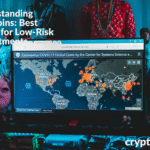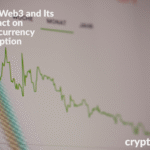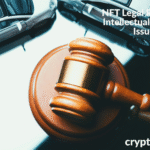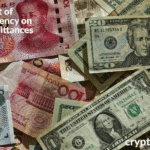As the cryptocurrency market continues to grow, so does the risk of hacks, scams, and other security threats. Protecting your digital assets is crucial to ensuring that your investments remain safe. This article outlines essential strategies and best practices for securing your cryptocurrencies and safeguarding against potential threats.
Understanding the Risks

- Hacks and Cyber Attacks
Cryptocurrency exchanges, wallets, and platforms are frequent targets for hackers. Successful attacks can lead to significant losses for users. - Phishing Scams
Phishing scams involve tricking users into providing sensitive information, such as private keys or passwords, through fake websites or emails. - Rug Pulls and Exit Scams
In the decentralized finance (DeFi) space, rug pulls occur when developers abandon a project after attracting investment, leaving investors with worthless tokens. Exit scams involve legitimate-looking projects that disappear with investors’ funds. - Malware and Keyloggers
Malware can infect devices and steal sensitive information, including private keys and passwords. Keyloggers specifically track keystrokes to capture login credentials.
Best Practices for Securing Your Digital Assets - Use Hardware Wallets
What They Are: Hardware wallets are physical devices that store your private keys offline, making them less vulnerable to online attacks.
Recommended Options: Popular hardware wallets include Ledger Nano S, Ledger Nano X, and Trezor.
Benefits: By keeping your keys offline, you significantly reduce the risk of hacks and unauthorized access. - Enable Two-Factor Authentication (2FA)
What It Is: 2FA adds an extra layer of security by requiring a second form of verification (e.g., a code sent to your phone) in addition to your password.
How to Implement: Use 2FA on all accounts related to your cryptocurrency holdings, including exchanges and wallets.
Recommended Apps: Use authentication apps like Google Authenticator or Authy instead of SMS-based 2FA, which can be vulnerable to SIM swapping. - Be Cautious with Phishing Attempts
Recognize Phishing: Be wary of unsolicited emails, messages, or links that ask for sensitive information. Always verify the source before clicking on links.
Check URLs: Ensure that you are visiting the official website of the service you are using. Look for HTTPS and double-check the domain name.
Use Bookmarking: Bookmark important websites to avoid accidentally visiting phishing sites. - Keep Software Updated
Regular Updates: Keep your operating system, wallet software, and antivirus programs up to date to protect against vulnerabilities.
Use Reputable Software: Only download wallets and applications from official sources to minimize the risk of malware. - Practice Good Password Hygiene
Strong Passwords: Use complex passwords that include a mix of letters, numbers, and special characters. Avoid using easily guessable information.
Password Managers: Consider using a password manager to generate and store strong passwords securely.
Unique Passwords: Use different passwords for each account to prevent a single breach from compromising multiple accounts. - Be Wary of Public Wi-Fi
Avoid Transactions on Public Networks: Public Wi-Fi networks can be insecure, making it easier for hackers to intercept your data.
Use a VPN: If you must use public Wi-Fi, consider using a virtual private network (VPN) to encrypt your internet connection. - Diversify Your Holdings
Spread Your Assets: Avoid keeping all your cryptocurrencies in one wallet or exchange. Diversifying your holdings can reduce the impact of a potential loss.
Use Multiple Wallets: Consider using a combination of hot wallets (for daily transactions) and cold storage (for long-term holdings). - Research Projects Thoroughly
Due Diligence: Before investing in any cryptocurrency or project, conduct thorough research to understand its legitimacy and potential risks.
Check Community Feedback: Look for reviews, discussions, and feedback from the community to gauge the project’s credibility. - Stay Informed
Follow Security News: Keep up with the latest news and developments in the cryptocurrency space, including security breaches and scams.
Join Communities: Engage with reputable cryptocurrency communities to share knowledge and stay informed about potential threats.
Conclusion
Protecting your digital assets from hacks and scams requires a proactive approach to security. By implementing best practices such as using hardware wallets, enabling two-factor authentication, and being cautious with online interactions, you can significantly reduce the risk of losing your investments. Staying informed about the latest security threats and continuously updating your security measures is essential in the ever-evolving landscape of cryptocurrency. As the market matures, the importance of safeguarding your assets will only increase, making it crucial for investors to prioritize security in their cryptocurrency journey. By adopting a comprehensive security strategy, you can enjoy the benefits of digital assets while minimizing the risks associated with them.









